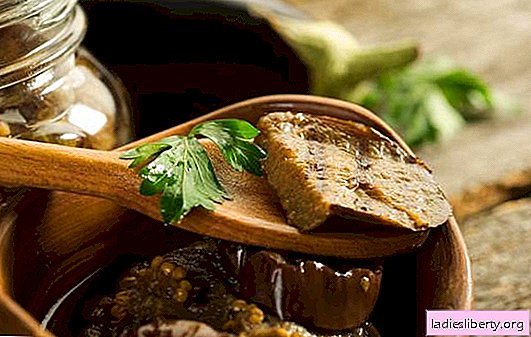
Abdominal pain in medical practice is ubiquitous.
The rhythm of modern life, especially the human diet, determine all kinds of malfunctions in the work of the organs of the gastrointestinal tract.
In other cases, pathological processes affecting the female reproductive system are found.
The average person is not easy to understand the causes of uncomfortable sensations: they are too numerous.
It is all the more difficult to distinguish harmless conditions from pathologies that threaten life and health.
In order to determine in time the dangerous manifestations of various conditions and not get confused when the question concerns further actions, you need to arm yourself with some knowledge.
The left side under the ribs in front hurts: causes
Pain in the left side is an informative symptom. However, it can be due to a huge number of reasons. In the vast majority of cases, we are talking about problems with the gastrointestinal tract. In women, the situation is more complicated: pathologies of the reproductive system cannot be ruled out. What reasons can we talk about:
• Stomach diseases. First of all, we are talking about the notorious gastritis. Gastritis is an inflammatory lesion of the gastric mucosa. The pain syndrome in gastritis is intense, discomfort is localized in the epigastric region (in the center, just below the chest) and the left side. Similar manifestations are gastric ulcer. You can distinguish them only with the help of endoscopic examination.
• Colon diseases. First of all, it is a "fashionable" irritable bowel syndrome. Strictly speaking, IBS is not an organic bowel disease. It is due to psychosomatic reasons, but is accompanied by a mass of uncomfortable sensations. Often the pain is localized in the sigmoid colon (left under the ribs). Intense pain is accompanied by inflammation of the sigmoid colon (sigmoiditis), colitis (inflammation of the mucous membrane of the colon), neoplasms of the organ (not always malignant), colic, etc.
• Pancreatitis. Pancreatic inflammation. Pancreatitis is not always easy to distinguish from gastritis, however, pain in inflammatory lesions of the gland is much stronger.
• Kidney pathology. The left kidney is located in anatomical proximity to the organs of the gastrointestinal tract, so the localization of pain can not always be accurately determined. Pathologies of the kidneys can "give" reflected pain. Among them: glomerulonephritis, pyelonephritis, urolithiasis, etc.
• Pneumonia. It may seem strange, but pneumonia (especially lower lobar) is accompanied by pain in the left side.
• Diseases of the cardiovascular system. Dull or burning pains in the left side and behind the sternum can indicate a heart attack, an attack of angina pectoris, the development of coronary heart disease.
• Spleen inflammation.
As you can see, the list is impressive. Women have more reasons why the left side under the ribs in the front hurts even more. Many problems with the reproductive system are characterized by pain:
• Ovarian lesions. Inflammation, rupture of the ovary, torsion. All lesions of the ovaries are accompanied by intense pulling pains (with damage to the left ovary, the pain radiates to the left side).
• Ectopic pregnancy.
• Endometriosis. Represents the proliferation of tissues of the endometrial layer of the uterus outside the body. It occurs mainly in older people.
For obvious reasons, it is impossible to figure out the sources of the problem yourself. You need to have special medical knowledge. However, you need to know how certain diseases and serious conditions are manifested in order to respond in time.
Left side pain under the ribs in front: concomitant symptoms
You need to carefully listen to your own body so as not to miss important signals. Fortunately, pain never remains without companions. This facilitates the diagnosis and allows the patient to determine that something is wrong with the body.
• Diseases of the stomach are almost always accompanied by dyspeptic symptoms: heaviness in the stomach, indigestion, also heartburn, belching. The pain in diseases of the stomach is pressing, bursting. Stool disorders are rare. However, to distinguish a gastric ulcer from gastritis, as already mentioned, is not easy.
• Intestinal pathology. Accompanied by characteristic manifestations. The leading manifestation is stool disorders. In this case, there may be both diarrhea and constipation (and sometimes their alternation). Veins of blood, white ribbon-like mucus or pus are found in the stool. Flatulence occurs without stool disorders, but with an intense discharge of gases. Unfortunately, the only thing that can be done by detecting such symptoms is to detect a malfunction in the intestines. A specific disease can only be determined using endoscopic examination.
• kidney disease. It is difficult to determine them, since renal pathologies in the early stages can be masked by other diseases. Accompanied by impaired urination.
• Pain in the jaw, left arm - this is a reason to beware. So manifested heart disease (including heart attack).
The left side under the ribs in front hurts: diagnosis
The first thing a patient should do if he finds discomfort in his left side is to see a doctor. You can only drown out the symptoms yourself, but not cope with the root cause. For pain of high intensity, if the pain is of a “dagger” nature, do not hesitate to call an ambulance: it can be a heart attack, perforated ulcer, acute pancreatitis, etc. Many conditions pose a direct threat to life and can be fatal. In all other cases, there is no urgency, but it is recommended that you see a doctor as soon as possible. Who to contact:
• Therapist (the first one to contact).
• Gastroenterologist.
• Nephrologist.
• Cardiologist.
• Gynecologist.
The diagnostic strategy is developed by the doctor based on the symptomatic complex.
In general, the diagnosis includes:
• History taking (patient survey). The doctor asks standard questions regarding the patient’s well-being, his complaints, etc. An anamnesis is especially important when diagnosing gynecological diseases, so there’s nothing to hide: this is not the case when you can be shy, embarrassed, etc. The doctor should know about the patient’s condition everything.
• Palpation. The doctor "probes" potentially problematic areas to identify pain reactions, determine the size and structure of organs.
• Contrast radiography of the stomach, intestines.
• Endoscopic examinations. FGDS for assessing the state of the gastric mucosa (allows you to accurately exclude tumors of the stomach, to determine the degree and nature of damage to the mucous organ). Colonoscopy is the only possible and most informative method for diagnosing intestinal pathologies (from colitis to tumors). Laparoscopy - is prescribed for suspected ectopic pregnancy (only if indicated).
• Ultrasound procedure. It is used to assess the condition of organs in all possible diseases.
• Laboratory research. A general blood test makes it possible to identify the presence of a focus of inflammation: leukocytosis and an increase in ESR are characteristic of almost any inflammation, eosinophilia accompanies autoimmune (including allergic processes). In children, allergic reactions can be manifested by intestinal disorders, therefore, a general blood test is especially important in examining small patients. Also, a general blood test allows you to distinguish an ectopic pregnancy from pathological processes of a different kind: an increase in the level of leukocytes and ESR is not typical for pregnancy. A general urinalysis, blood biochemistry are necessary to assess the condition of the kidneys, liver and pancreas.
• Cardiogram, ECHO KG.
The left side under the ribs in the front hurts: treatment
If the left side hurts under the ribs in front, it should be treated not for pain, but its cause. It’s in the patient’s hands to help himself, but it’s important not to overdo it: pain can be removed with antispasmodics (No-shpa, Drotaverin, Duspatalin, etc.). In exceptional cases (if the pain persists), you can take an analgesic. But this will not solve the problem. The treatment should be carried out by a specialized specialist.
Depending on the specific disease, treatment can be either conservative or surgical.
Conservative treatment is reduced to taking several groups of medicines:
• Antispasmodics. They are used to relieve spasm (muscle contraction) of the smooth muscles of the organ. Among them: Maksigan, Baralgin, Spazgan, No-shpa, Duspatalin and others. Let's admit an independent reception (within reasonable limits).
• Analgesics. Designed to relieve pain: Maksikold, Kolfarit, Novalgin and others. Uncontrolled can not be taken.
• Anti-inflammatory drugs. Assigned for inflammatory lesions of internal organs: Ketorolac, Nise, etc.
• Antibacterial drugs. Used if the disease is caused by an infectious lesion. Specific names are selected by a specialist.
• Antacids. The task of antacid drugs is to reduce the acidity of gastric juice in gastritis. Some names: Gastrofarm, Gastal, Rutatsid, etc.
• Carminative drugs. Designed to combat increased production of intestinal gases. Particularly relevant is the problem of flatulence for children and people suffering from gastrointestinal diseases. Appointed: Almagel, Espumisan, etc.
• Diuretics. Otherwise called diuretics. They are prescribed for confirmed pathologies of the kidneys. Self-administration of diuretics is unacceptable: side effects often develop and are dangerous.
Surgical treatment is prescribed in a limited number of cases:
• For tumors (benign, malignant).
• If the cause of the pain is a hernia (for example, a diaphragm hernia).
• For most gynecological pathologies (ovarian torsion, ectopic pregnancy). In addition to traditional abdominal operations, in recent years, endoscopic, minimally invasive interventions have been increasingly practiced.
• In case of violation of the anatomical integrity of a particular organ (with rupture of the spleen, stomach, perforated ulcer, etc.).
The left side hurts under the ribs in front in children
The causes of pain in children are the same as in adults. There are no major differences in either diagnosis or treatment strategy. However, according to medical statistics, pain in children is due to three leading causes:
• Intestinal colic.
• Allergic reactions.
• The development of appendicitis (oddly enough, in children, pain often radiates to the left side).
Other causes are less common, but they cannot be ruled out. Fortunately, many gastrointestinal diseases in younger patients are easier and more often treated on an outpatient basis.
Diseases that provoke pain in the left side, there are many. Many are life threatening. There is no chance to understand such a variety of pathologies without special medical knowledge, so you can not do without the help of a doctor. Timely contacting a specialist is the key to a favorable outcome for any, even the most serious disease.











